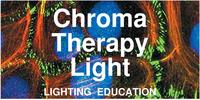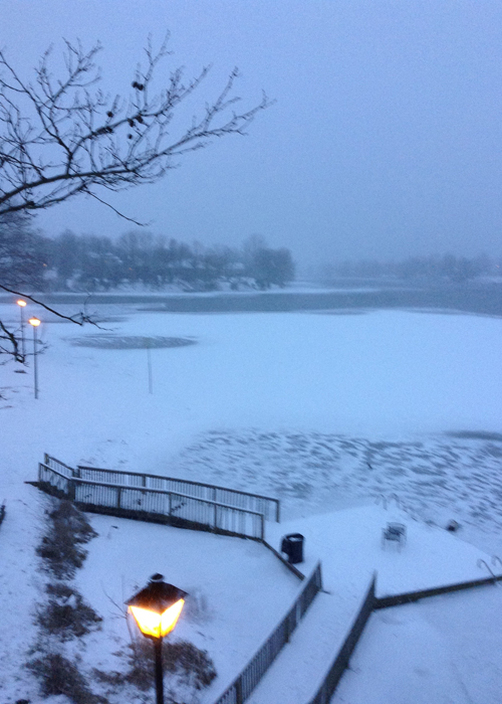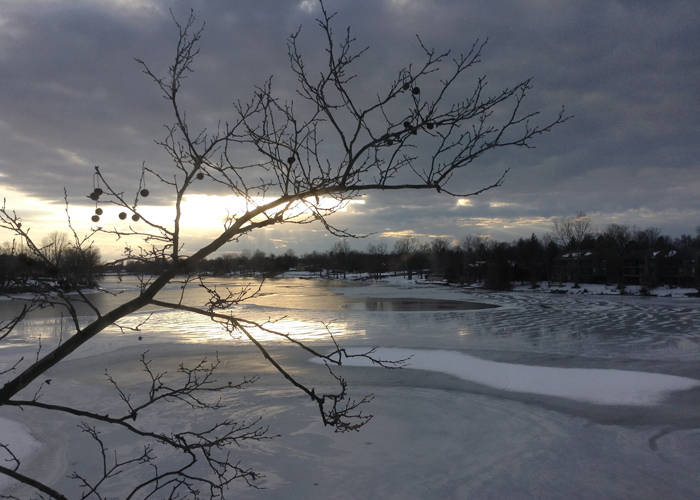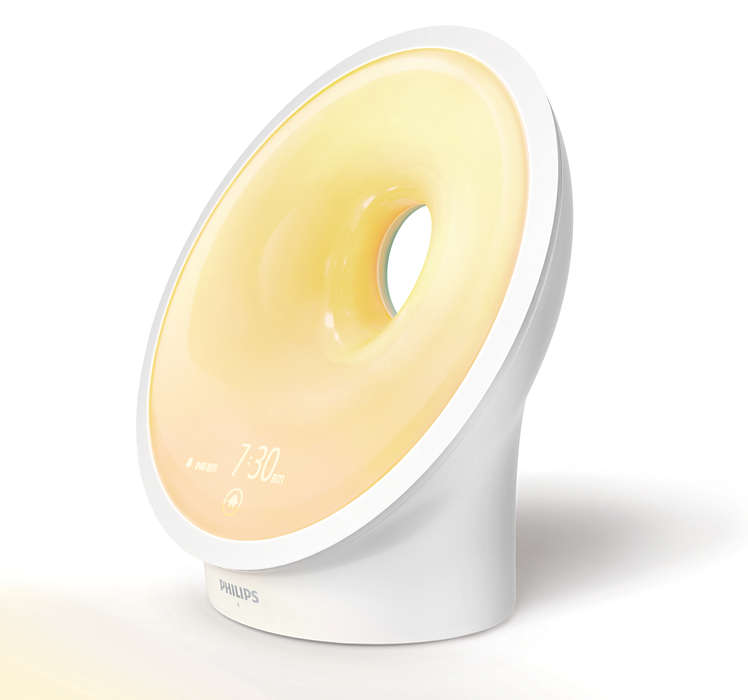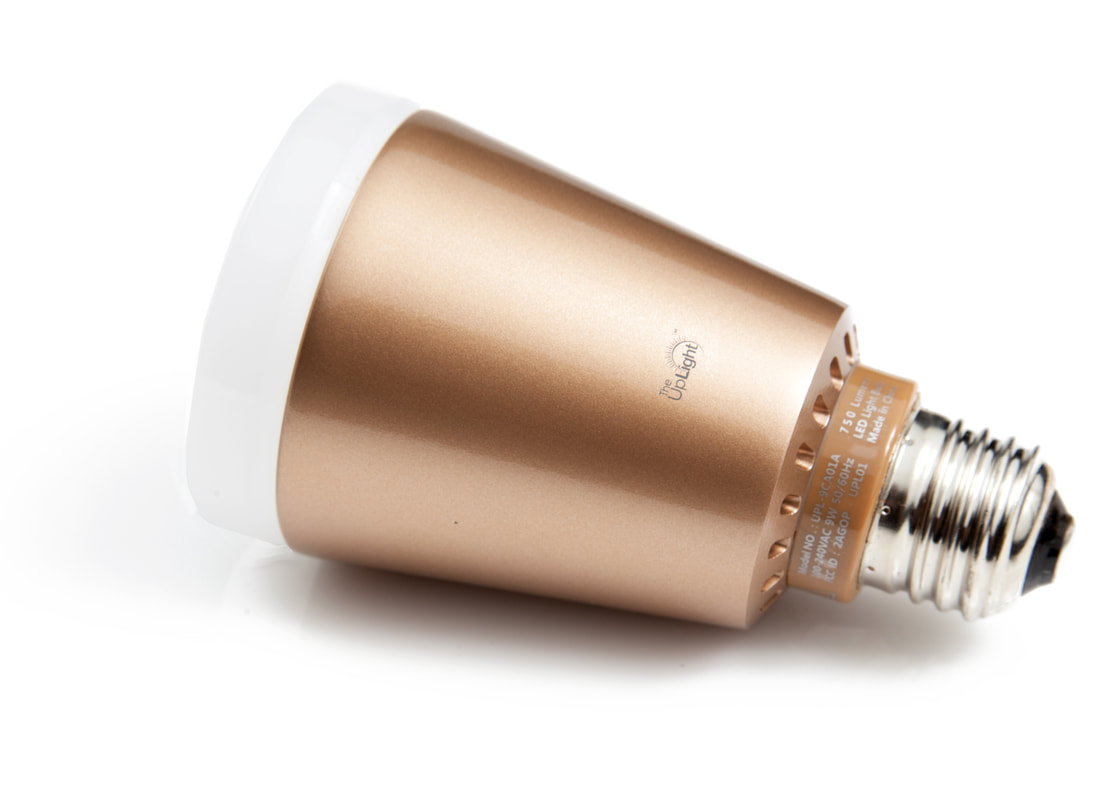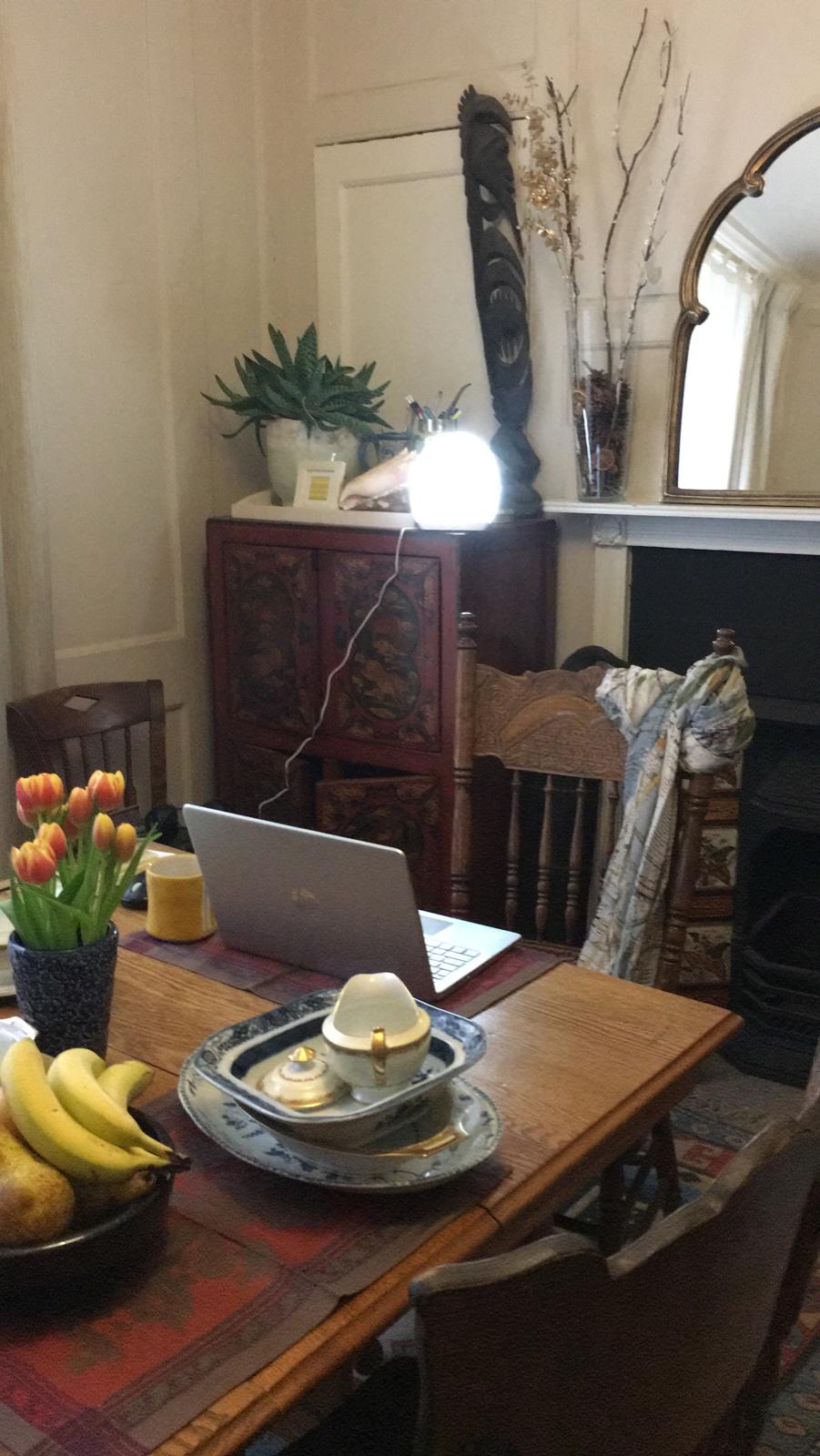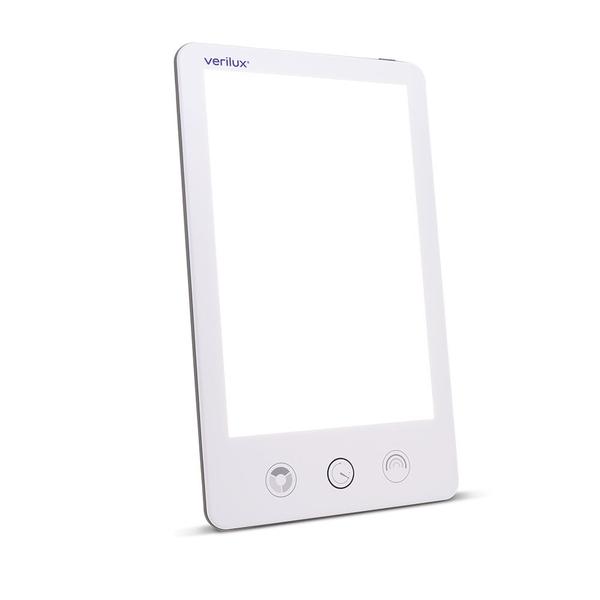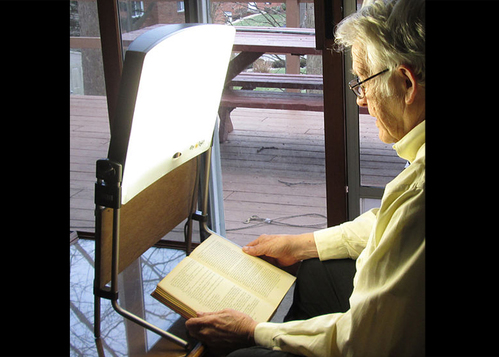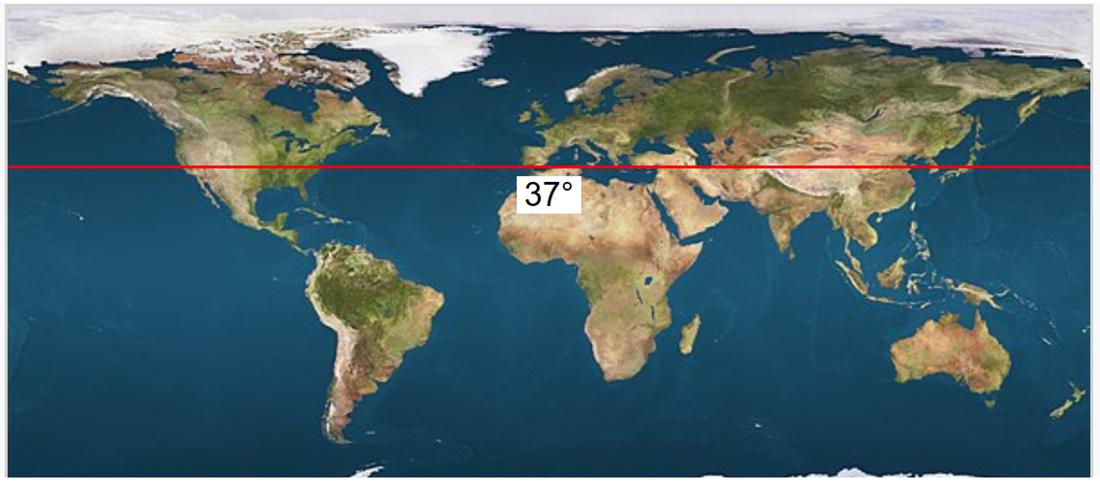SAD - Learning Objectives
SAD - Seasonal Affective Disorder
SAD - Seasonal Affective Disorder impacts people in the darker winter months.
"Seasonal affective disorder (SAD) is a type of depression that's related to changes in seasons — SAD begins and ends at about the same times every year. If you're like most people with SAD, your symptoms start in the fall and continue into the winter months, sapping your energy and making you feel moody." [1] Cause of Seasonal Affective Disorder
"The specific cause of seasonal affective disorder remains unknown. Some factors that may come into play include:
Go for an early morning walk.
According to Dak Kopec, BAC Director of Design for Human Health, Boston Architectural College, “Take a walk at 7:00 am, there is the least air pollution at that time.” When I asked him why, he said, “Particulates are trapped by moisture in the air and fall to the ground.”[2]
Ahh, no wonder my car gets filthy overnight parked on the streets of LA. 7:00 AM is the best time to walk.
Light Treatment for SAD
"Natural morning sunlight with its high intensity in the 460 - 500 nm region, also relieves the symptoms of SAD (Kent et al., 2009). The antidepressant response to visible light takes approximately 3-4 days to take effect. Treatment needs to be continued throughout the winter months to avoid withdrawal symptoms." [3]
Ganglion Cells are light-sensitive eye cells ‘intrinsically photosensitive retinal ganglion cells’ (ipRGCs). These cells have nothing to do with vision. They absorb light in order to properly set our circadian clock. Ways of adding light to your home
Here are a few tips to creating a brighter home or office.
Dawn Simulator
Dawn simulation is a way to introduce light to wake you up in the morning use the following devices.
Programmed lights go on automatically each morning, resulting in stable pattern of exposure, a good thing in light therapy. For some users of SAD Light boxes who may experience headaches, eye strain, glare, and agitation; dawn simulation may be a welcome alternative.
|
SAD Light BoxesA friend of mine calls it the 'Happy Light' and turns it on for 20 minutes or more each morning. Models with timers, dimmers, and color temperature settings are now available.
How to increase serotonin in the human brain without drugs [4]
In an article by Simon N. Young, published November 2007, in the Journal of Psychiatry Neuroscience, he listed the following four approaches to increasing Serotonin levels: Meditation, Light Exposure, Exercise, and Diet. The following quote focuses on Light. Link to the complete article are listed in Footnote [4] (Bold Faced mine)
"...Exposure to bright light is a second possible approach to increasing serotonin without drugs. Bright light is, of course, a standard treatment for seasonal depression, but a few studies also suggest that it is an effective treatment for nonseasonal depression38 and also reduces depressed mood in women with premenstrual dysphoric disorder39 and in pregnant women suffering from depression.40 The evidence relating these effects to serotonin is indirect. In human postmortem brain, serotonin levels are higher in those who died in summer than in those who died in winter.41 ... ...In humans, there is certainly an interaction between bright light and the serotonin system. The mood-lowering effect of acute tryptophan depletion in healthy women is completely blocked by carrying out the study in bright light (3000 lux) instead of dim light.49 Relatively few generations ago, most of the world population was involved in agriculture and was outdoors for much of the day. This would have resulted in high levels of bright light exposure even in winter. Even on a cloudy day, the light outside can be greater than 1000 lux, a level never normally achieved indoors. [4] Light Therapy
"Treatment for seasonal affective disorder may include light therapy, medications and psychotherapy. If you have bipolar disorder, tell your doctor — this is critical to know when prescribing light therapy or an antidepressant. Both treatments can potentially trigger a manic episode.
Light therapy In light therapy, also called phototherapy, you sit a few feet from a special light therapy box so that you're exposed to bright light. Light therapy mimics natural outdoor light and appears to cause a change in brain chemicals linked to mood. Light therapy is one of the first line treatments for fall-onset SAD. It generally starts working in a few days to two weeks and causes few side effects. Research on light therapy is limited, but it appears to be effective for most people in relieving SAD symptoms. Before you purchase a light therapy box, talk with your doctor about the best one for you, and familiarize yourself with the variety of features and options so that you buy a high-quality product that's safe and effective.' [1] Hazards of Light Boxes & Light Therapy
Light is powerful and can harm as well as help. Do no harm, and use caution, when using light therapy. Some light boxes, especially fluorescent, may increase the risk of Macular Degeneration and cataracts [5] from overexposure to UV light. Purchase and use Light Boxes with low UV - limit ultraviolet radiation below 400 nm.
"It is also essential to remove very short violet-blue visible light (400 to 440nm) from all therapeutic slight sources, as these wavelengths of light present a risk of retinal damage to patients above50 years old. There is even greater hazard if light therapy is given in conjunction with a phototoxic prescription [6] or herbal (including St. John's Wort) antidepressant medication, as this can lead to transient or permanent blindness." [6] 37th parallel north
"In the northern hemisphere at latitudes greater than 37 degrees, there is insufficient UV-B sunlight radiation available to drive the synthesis of vitamin D3 between the months of November and early March. Fortunately, the body has some capacity to store vitamin D3 in fat. It is also available through diet or may be taken as a vitamin supplement." [6]
The 37th parallel north is a circle of latitude that is 37 degrees north of the Earth's equatorial plane. It crosses Europe, the Mediterranean Sea, Africa, Asia, the Pacific Ocean, North America, and the Atlantic Ocean. At this latitude the sun is visible for 14 hours, 42 minutes during the summer solstice and 9 hours, 37 minutes during the winter solstice. This is roughly the northern limit of the visibility of Canopus, the second-brightest star of the night sky. White Light–Emitting Diodes (LEDs) at Domestic Lighting Levels and Retinal Injury in a Rat Model Background: Light-emitting diodes (LEDs) deliver higher levels of blue light to the retina than do conventional domestic light sources. Chronic exposure to high-intensity light (2,000–10,000 lux) has previously been found to result in light-induced retinal injury, but chronic exposure to relatively low-intensity (750 lux) light has not been previously assessed with LEDs in a rodent model. [7]
10 Tips to Get the Most Out of Light TherapyThis well written article explains some of the techniques and tips for using Light Therapy, written by: Marlynn Wei, MD, JD Harvard-trained Psychiatrist, Certified Yoga Teacher, Author of The Harvard Medical School Guide to Yoga
Footnotes
Photo Credits
Lake Photos and Living in UK by Deborah Borrowdale-Cox
SAD Light Therapy by Lou Sander Happy Light by Verilux |
- Home
-
- CHROMA Topics
- Color Spectrum - Light is Energy
- Color in Light
- Color in Nature
- Color in Paint
- Why does paint fade?
- Color Names & Meanings
- Color Phenomena
- Color Perception is Individual
- Color In Fashion
- Color for your home
- Color in Space
- Color Blindness
- Color Blind Interview
- Synesthesia
- Synesthete Deborah Borrowdale-Cox
- Synesthete Stephen Orr, BH&G Editor
-
- Circadian & THERAPY Topics
- Circadian Explained
- Circadian Ganglion Cells
- Circadian Melatonin
- Circadian Animals
- Circadian Research
- Autism & Lighting for the Spectrum
- Blue Light Dimming Apps
- Red Night Lights
- Vitamin D & Light
- SAD - Seasonal Affective Disorder
- Alzheimers and Light Therapy
- Photosensitivity - Light Sensitive Drugs
- Red Light Therapy
- Sleep & Lighting
- Dreams and Second Sleep
- NASA - Lighting in Space & Undersea
- Jet Lag
- Sunglasses
- Chakras
- Crystals, Minerals, & Gemstones
-
- LIGHTing Design Topics
- UV Germicidal Disinfection Light
- LED Lighting Facts Card
- CRI - Color Rendering Index
- LED TM-30
- LED Kelvin Color
- LED LPW
- LED Flicker
- LED Glare
- OLED - Organic LED
- Human Centric Lighting
- Lighting with Daylighting
- Lighting for Healthy Buildings & Zero Net Energy
- Lighting for Healthcare
- Lighting for Horticulture
- Lighting for Hospitality & LED Retrofits
- Lighting for Museums
- Lighting for Seniors & Low Vision
- Lighting Design Tips & Codes
- Parking Lot Lighting
- Solar Lighting for Humanity & World Health
- Davis Insectary Garden
- Santa Barbara Mesa Insectary Garden
- Home
-
- CHROMA Topics
- Color Spectrum - Light is Energy
- Color in Light
- Color in Nature
- Color in Paint
- Why does paint fade?
- Color Names & Meanings
- Color Phenomena
- Color Perception is Individual
- Color In Fashion
- Color for your home
- Color in Space
- Color Blindness
- Color Blind Interview
- Synesthesia
- Synesthete Deborah Borrowdale-Cox
- Synesthete Stephen Orr, BH&G Editor
-
- Circadian & THERAPY Topics
- Circadian Explained
- Circadian Ganglion Cells
- Circadian Melatonin
- Circadian Animals
- Circadian Research
- Autism & Lighting for the Spectrum
- Blue Light Dimming Apps
- Red Night Lights
- Vitamin D & Light
- SAD - Seasonal Affective Disorder
- Alzheimers and Light Therapy
- Photosensitivity - Light Sensitive Drugs
- Red Light Therapy
- Sleep & Lighting
- Dreams and Second Sleep
- NASA - Lighting in Space & Undersea
- Jet Lag
- Sunglasses
- Chakras
- Crystals, Minerals, & Gemstones
-
- LIGHTing Design Topics
- UV Germicidal Disinfection Light
- LED Lighting Facts Card
- CRI - Color Rendering Index
- LED TM-30
- LED Kelvin Color
- LED LPW
- LED Flicker
- LED Glare
- OLED - Organic LED
- Human Centric Lighting
- Lighting with Daylighting
- Lighting for Healthy Buildings & Zero Net Energy
- Lighting for Healthcare
- Lighting for Horticulture
- Lighting for Hospitality & LED Retrofits
- Lighting for Museums
- Lighting for Seniors & Low Vision
- Lighting Design Tips & Codes
- Parking Lot Lighting
- Solar Lighting for Humanity & World Health
- Davis Insectary Garden
- Santa Barbara Mesa Insectary Garden
